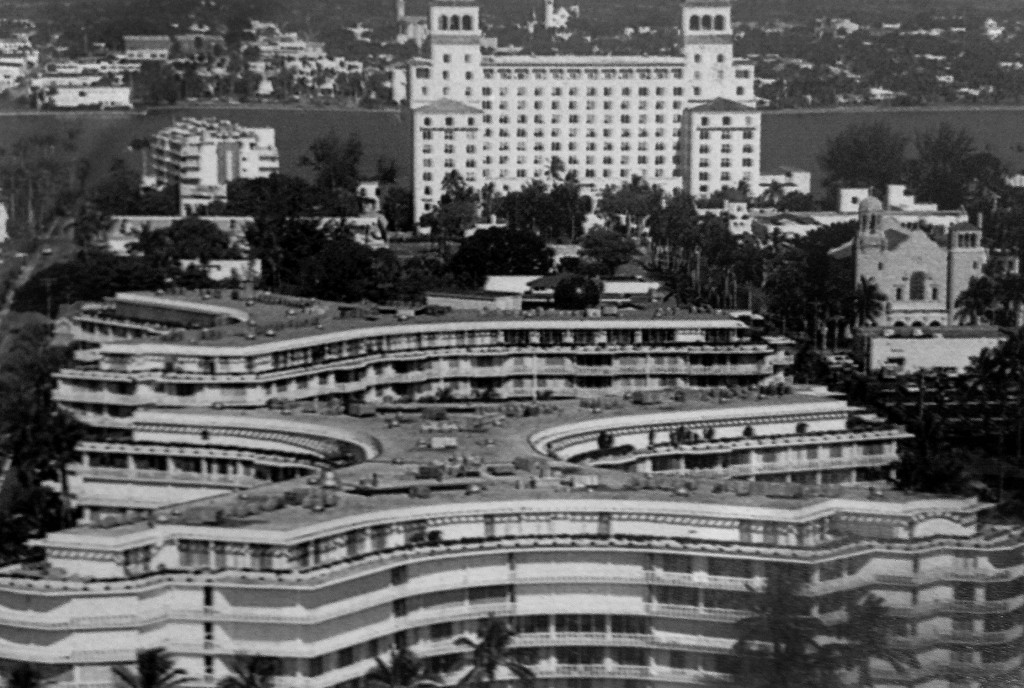
The Sun and Surf in Palm Beach. Designed by Eugene Lawrence, it provides a striking contrast to the more traditional neighboring styles.
We were recently commissioned to design a contemporary house in Palm Beach, a community well known for its Mediterranean style architecture – less known for its once celebrated modernist works. Although many examples were built throughout the 1950s and 1960s, including work by Edward Durrell Stone, they seldom make an appearance in books about the history of Palm Beach architecture.
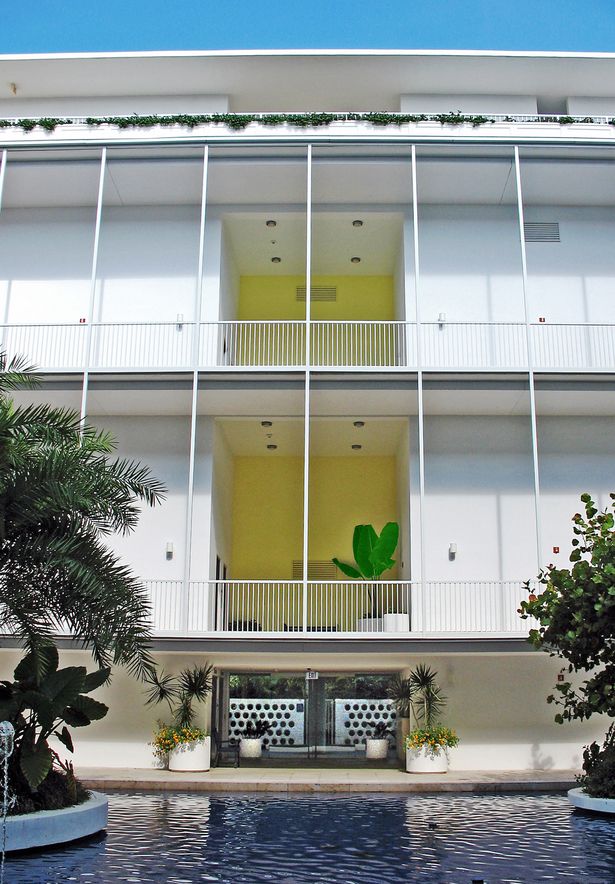
Distinctive, pencil-thin columns define 400 South Ocean Boulevard, designed by Edward Durell Stone in the late 1950s.
Part of our process in designing a contemporary house is to research the modern tradition within the region so that our work respects its heritage while presenting a fresh iteration. In this case, we studied Palm Beach modernism. Unfortunately, as conservative values and traditional styles took hold in the early nineteen-eighties, the value of modernism declined and the majority of these buildings were demolished.
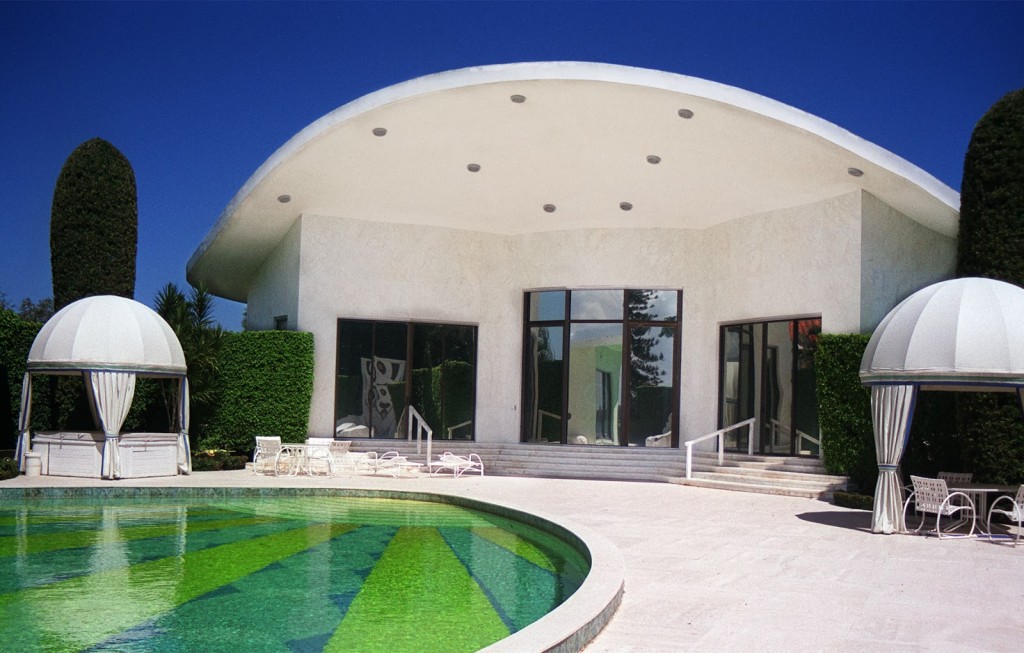
La Ronda, an estate designed by Architect John Volk in 1969, was demolished in 2003
During its heyday in the mid-20th century, Palm Beach modernism was a lively juxtaposition to the ubiquitous terra cotta tiled roofs and stucco walls. Even Maurice Fatio, the Swiss born architect who became a legend for his Mediterranean Style homes, adopted a streamline sensibility to serve his client’s growing appetite for modernism. In 1936 he produced one of the most elegant and earliest examples of Palm Beach modern design – The Reef, an 18,000 square foot beachfront estate. Today it remains as one of the few, perhaps only, well preserved modern homes in Palm Beach.
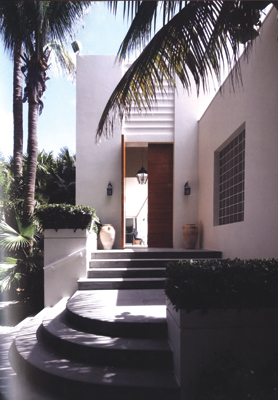
An example of streamlined modern: The Reef by Maurice Fatio in 1936
However, the majority of modern homes have been demolished or poorly remodeled and we were left wondering how to imagine Palm Beach modern in its day. We searched for remnants from the era. Leafing through local magazines from the 1950s and 60s, at the Society of the Four Arts Library, we discovered that Palm Beach had welcomed various waves of experimentation, imported styles, and mid-century modernism.
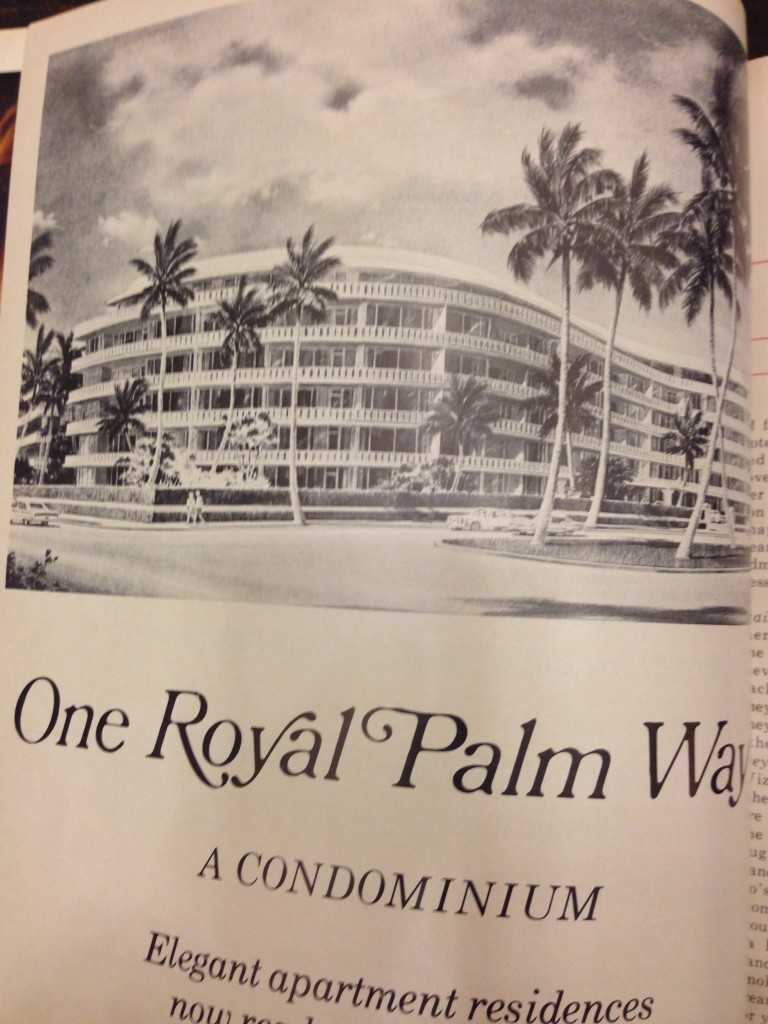
One Royal Palm Way Condominium, designed by Architect Howard Chilton
One image we collected catches an elegant couple emerging from a gleaming Rolls Royce. It’s the early 1960s. They stand, impeccably dressed, against a background of steel mullions, concrete columns and flared capitols. Paper lanterns hang from an undulating roof edge and sway in the evening breeze. The scene conveys “worldly elegance” and the ease of 1960’s modernity. Sadly, this part of the fabled Colony Hotel was long ago demolished.
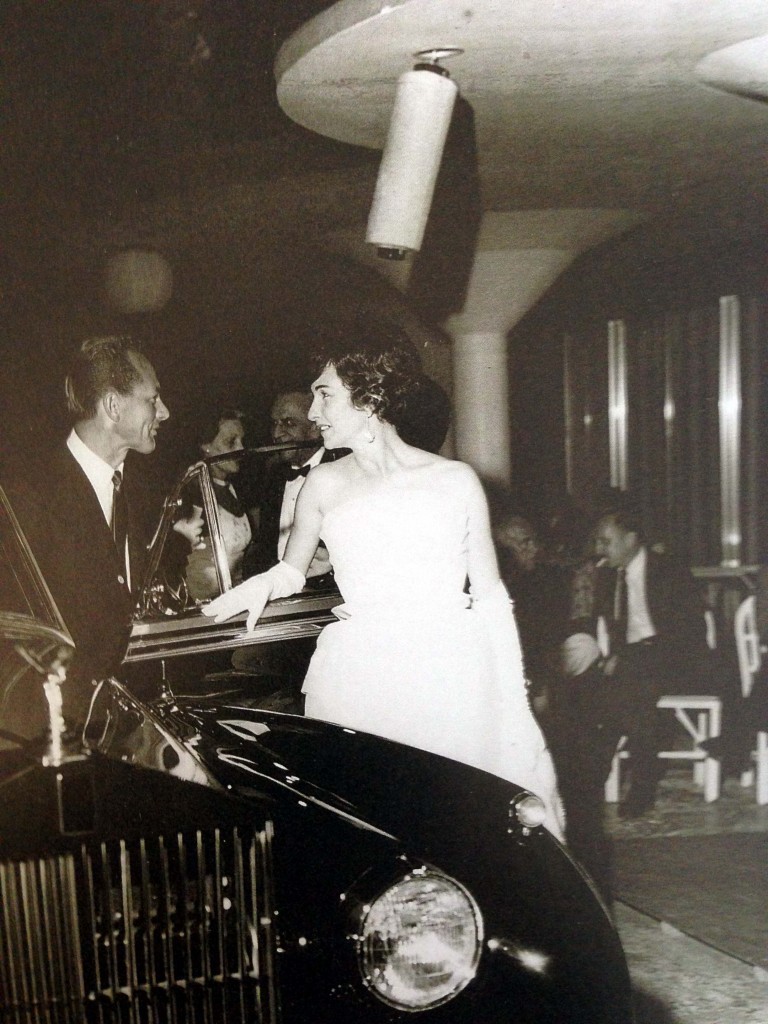
Looking at the surviving example below – a series of sculpted sunshade screens add rhythm to the gracefully contoured building. The condominium, designed by Howard Chilton in the late 1960s, stands to this day as a mid-century gem. Even 43 years after completion, the screens impart a lively, eye-catching quality. Recently, the building’s owners wanted to permanently remove the screens to facilitate window replacement, but the Palm Beach Architectural Review Commission rejected the proposal siting the need to preserve the few remaining works of modern architecture. That’s good news because it’s by looking back on historic examples like these that our future vision for a Palm Beach residence has been enlivened by its modern legacy.
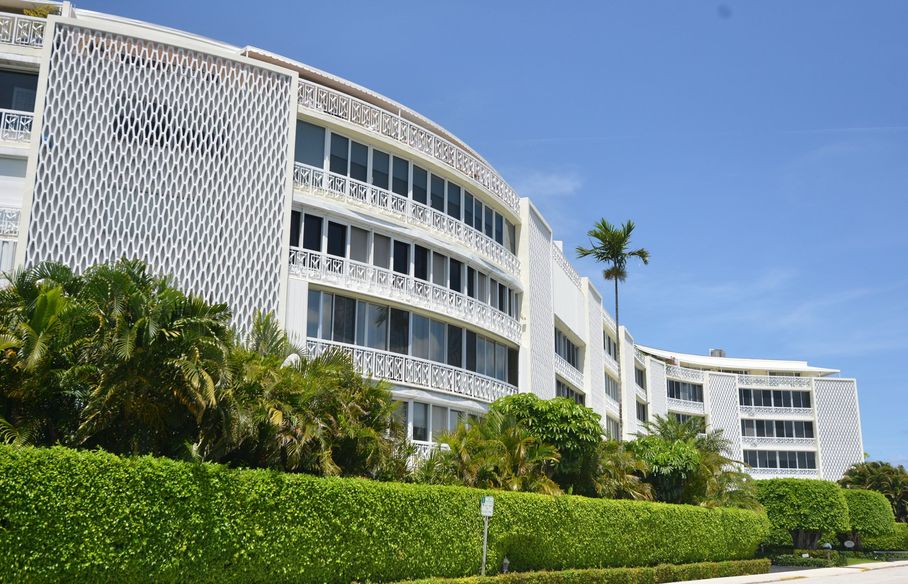
Screens create character and shading for 389 South Lake Drive, designed by Howard Chilton